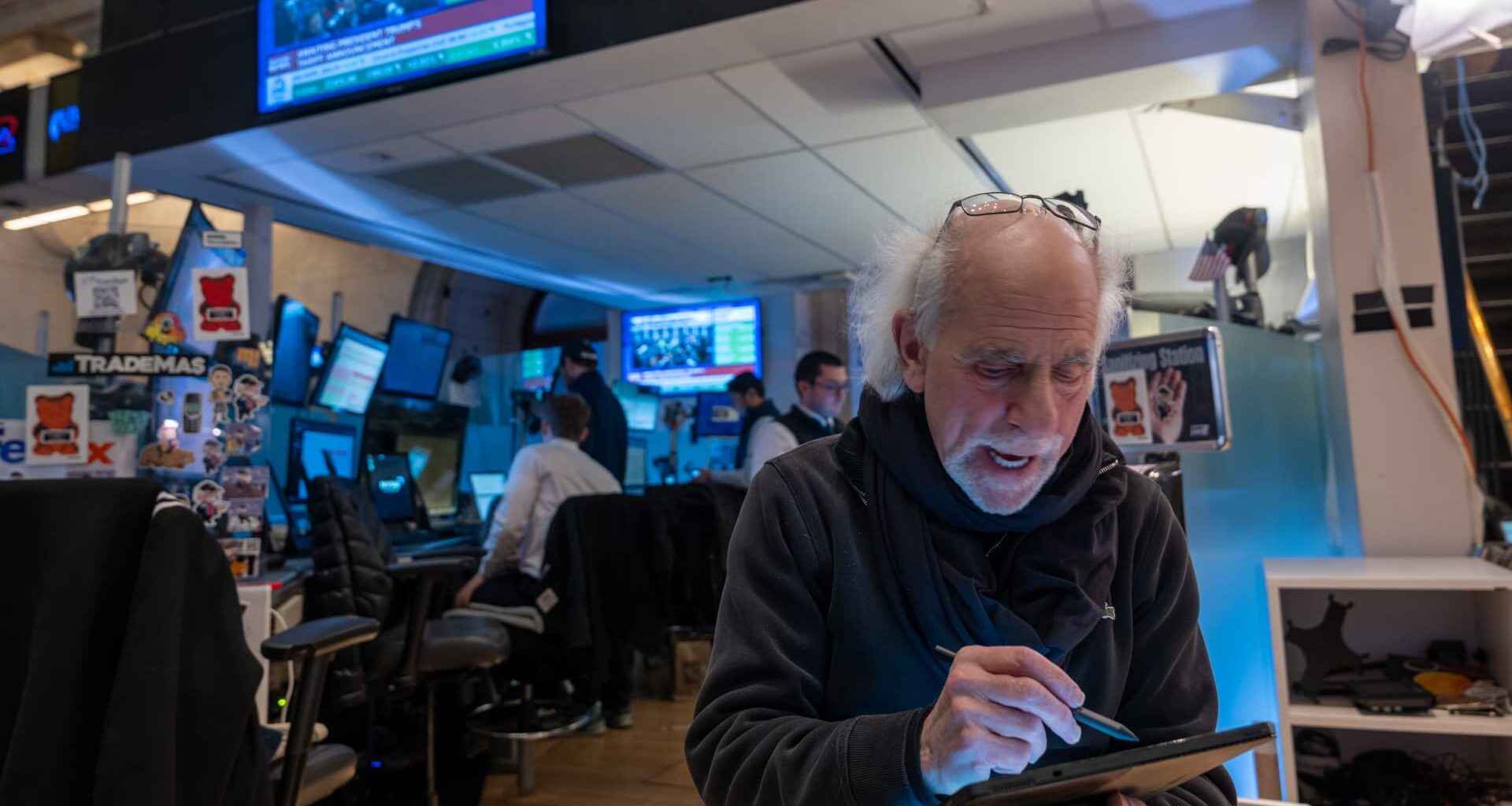Traders work on the floor of the New York Stock Exchange moments before the Closing Bell and the start of President Donald Trump’s news conference on tariffs on April 02, 2025 in New York City.
Spencer Platt | Getty Images
Stock futures pointed to a mixed open on Wednesday, as investors weighed earnings releases from big banks and awaited the latest wholesale inflation report.
Futures tied to the Dow Jones Industrial Average rose 111 points, or nearly 0.3%. S&P 500 futures hovered below the flatline. Nasdaq-100 futures slipped 0.2%.
Big bank earnings releases continued for a second day. Bank of America reported better-than-expected earnings for the second quarter, sending shares up more than 1%. To be sure, Bank of America’s net interest income missed analyst expectations. Goldman Sachs shares jumped 1.5% after topping second-quarter expectations on the back of better-than-expected equities trading.
These results come a day after JPMorgan Chase, Wells Fargo and Citigroup each posted quarterly figures that topped analysts’ expectations for earnings and revenue.
On top of that, June’s producer price index report rolls out at 8:30 a.m. ET. Economists polled by Dow Jones expect expect a 0.2% increase for PPI.
That report will follow data released Tuesday which showed inflation moving further away from the Federal Reserve’s 2% target. The report weighed on markets during the previous session.
The reading has fueled some concern for Wall Street, showing the impact of President Donald Trump’s tariffs as they make their way through the economy. Trump over the weekend fanned the flames of his trade war after he announced a 30% tariff on imports from Mexico and the European Union beginning Aug. 1.
Trump also announced that he had reached a trade deal with Jakarta, which included a 19% tariff on the Asian country’s exports to the U.S. Indonesia President Prabowo Subianto later confirmed in an Instagram post that he had a “very good call” with Trump.
“Inflation has started a slow climb as signs of tariff-induced inflation are now evident within durable and nondurable imports,” said Joe Brusuelas, chief economist at RSM U.S. “That prompts an important question: Will service and housing inflation, which is easing but still elevated, cool further to offset what will be a more pronounced increase in durable and nondurable goods?”
“Our sense is that the Federal Reserve will continue to display patience as the direction of inflation evolves,” he added.
